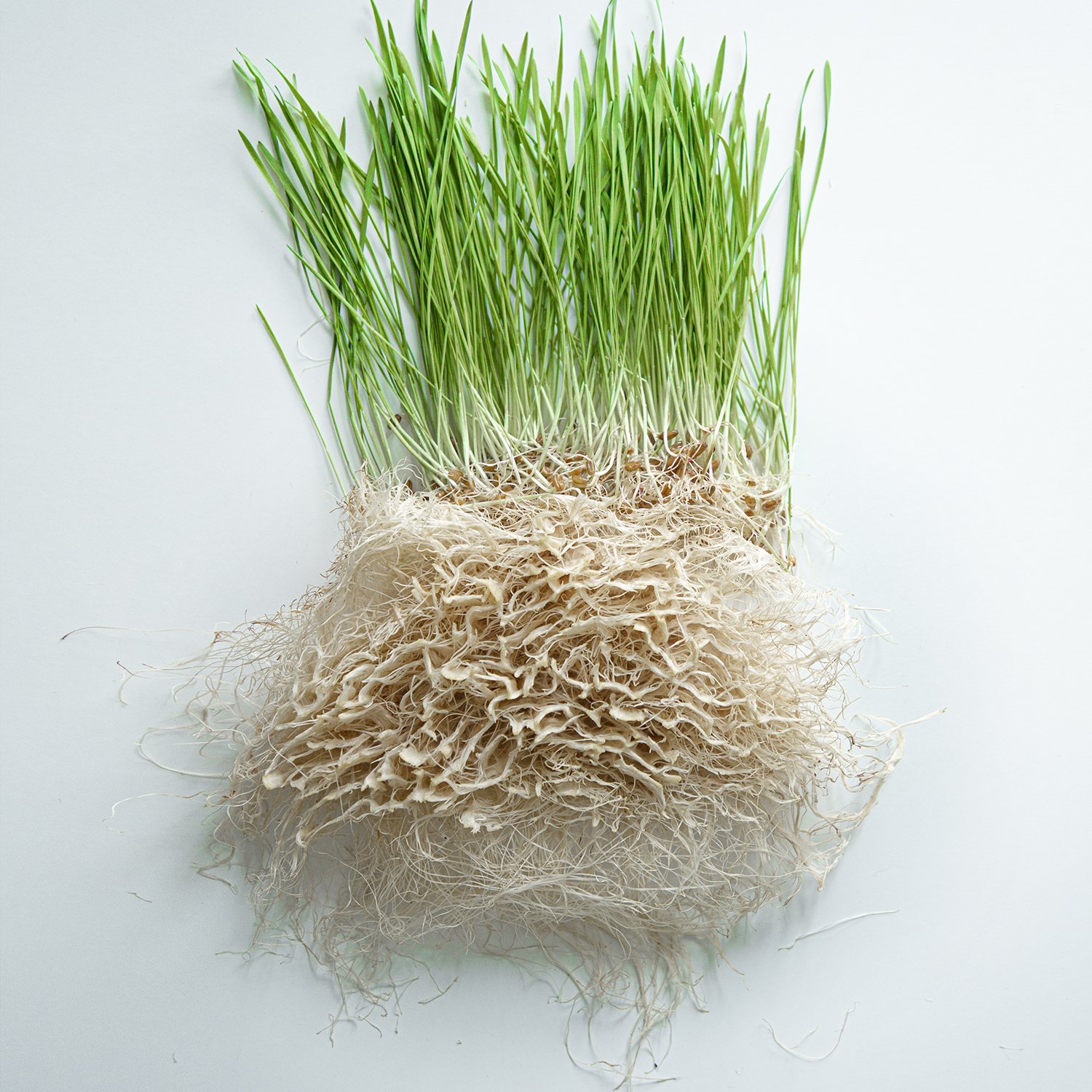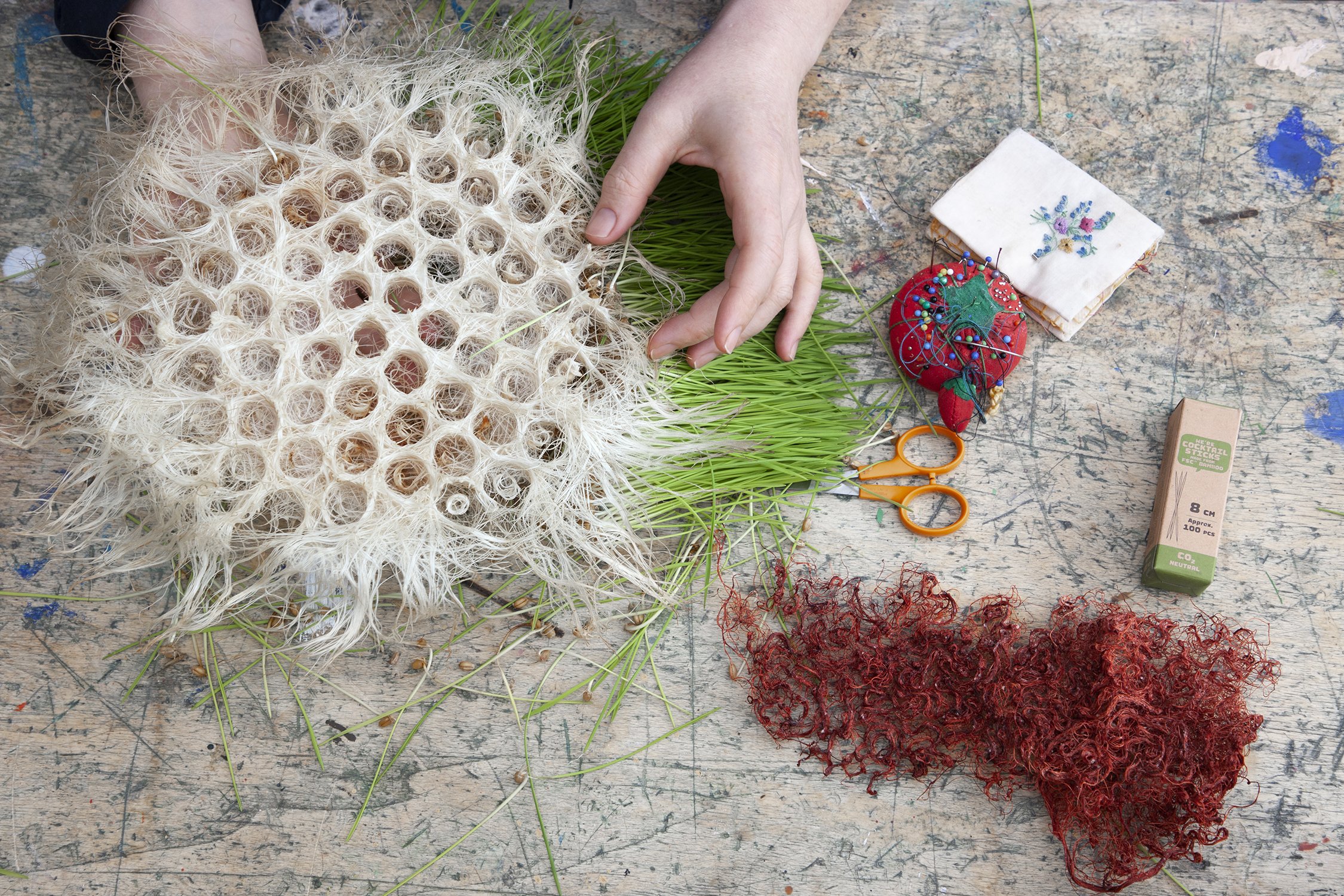Seed
Water
Time.
Beeswax templates influence the way the root grows and the actual weaving process is completely organic. Rather like a tree growing, the root takes a different path every time. It likes to grow in colonies and as such the root hairs gather in groups to form repeating pathways so objects that have been grown from the same template are not identical but appear to come from the same family.
Wheatgrass seed is cultivated in templates carved from beeswax. Over 12 days the shoots grow to 20cm while the roots bind below to form a naturally woven structure.
Sustainability is at the heart of the process, where all the ingredients are organic and locally sourced. Water is reused from runoff and any left-over shoot, seed or root is eaten as animal fodder.
The roots of the wheatgrass plant can be grown vertically or horizontally and follow the form of the templates they grow into. They can be forced into small spaces so they become flat and compact or encouraged to grow more deeply to create 3D shapes.
Crafting Root
When freshly harvested the root is heavy and damp and after 24 hours, it dries out to become a featherweight, botanical skeleton, capable of supporting its own weight. Different patterns produce different strengths, and it can be grown into deep, strong shapes or fine and lacey fabrics.
The challenge is to work with the natural growing process to guide the root into functional forms. Root is an exciting and versatile material where the most authentic results are achieved by using the natural flows of the fibre. It’s light enough to be suspended easily in hanging structures or sewn into fashion and wearables.










